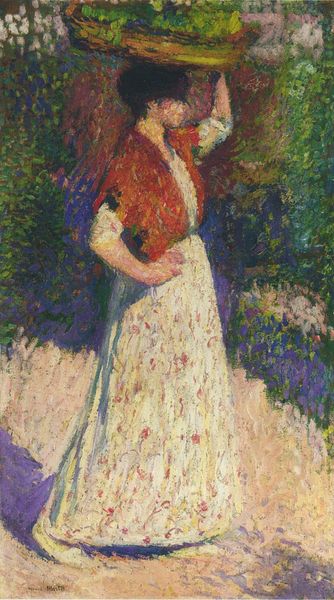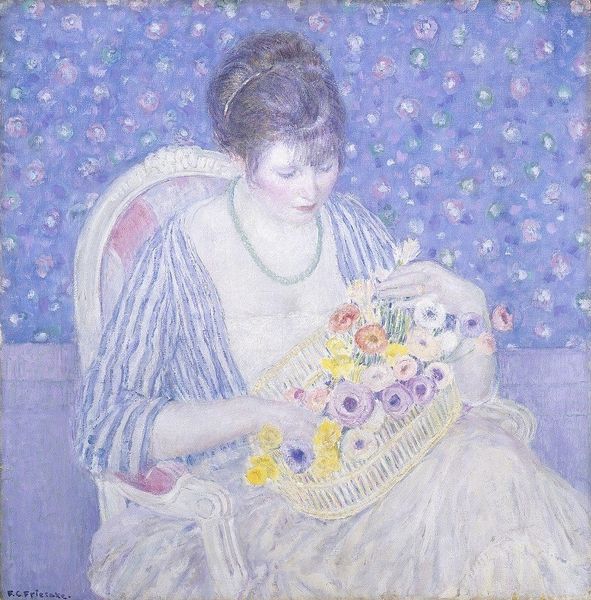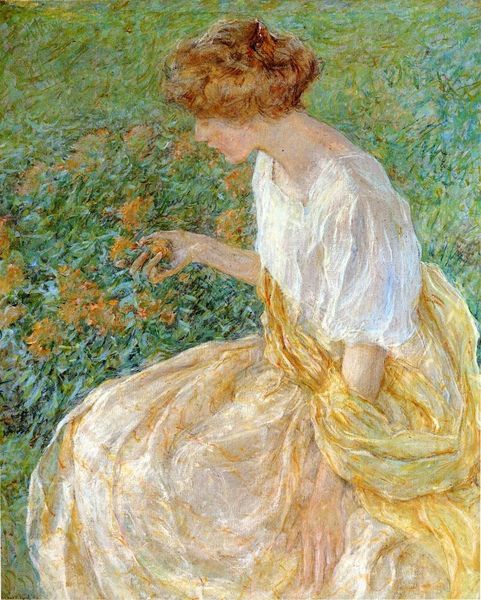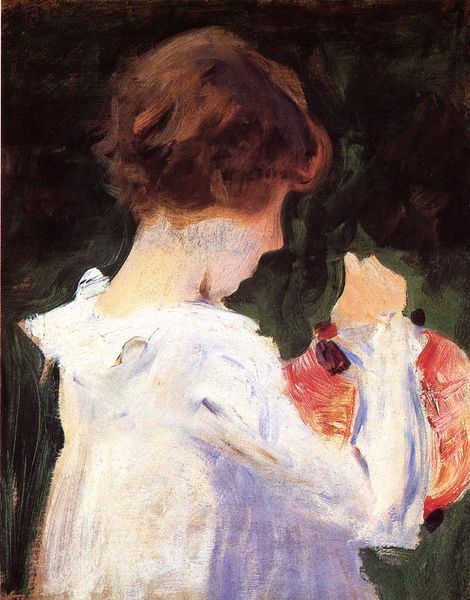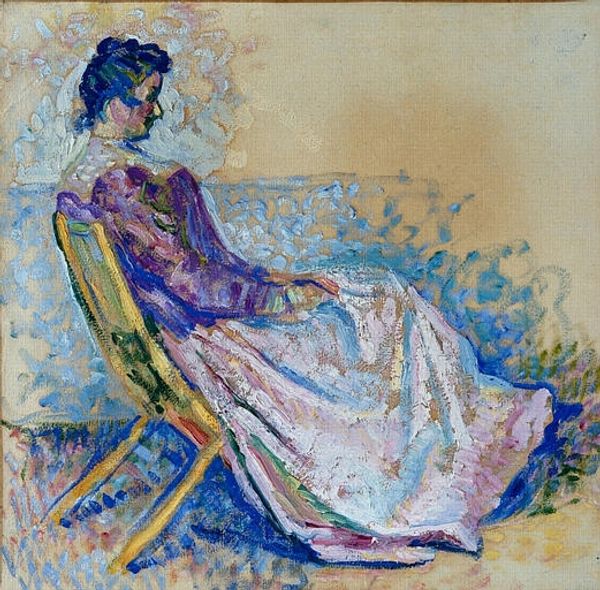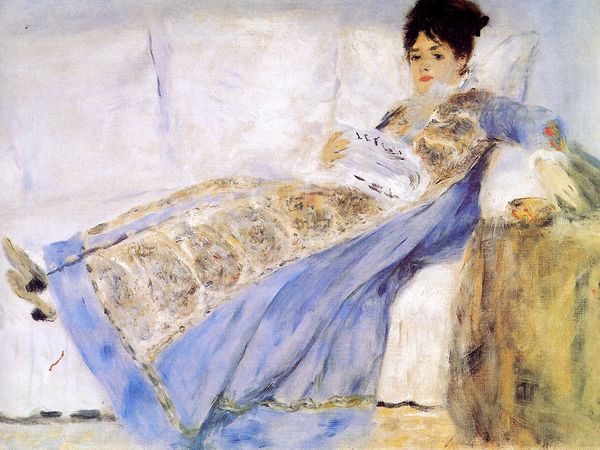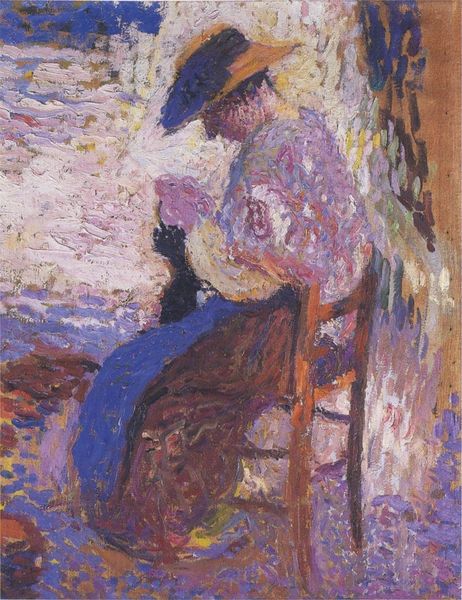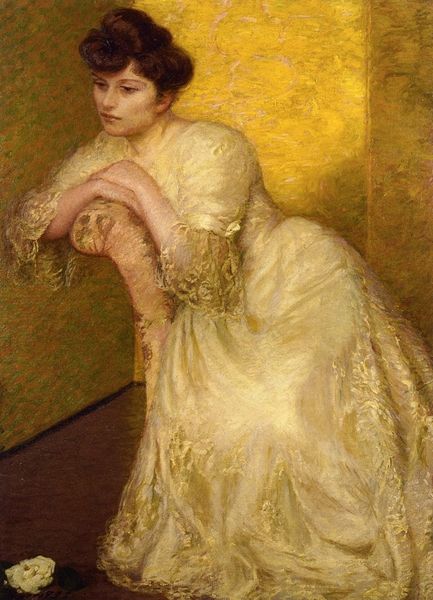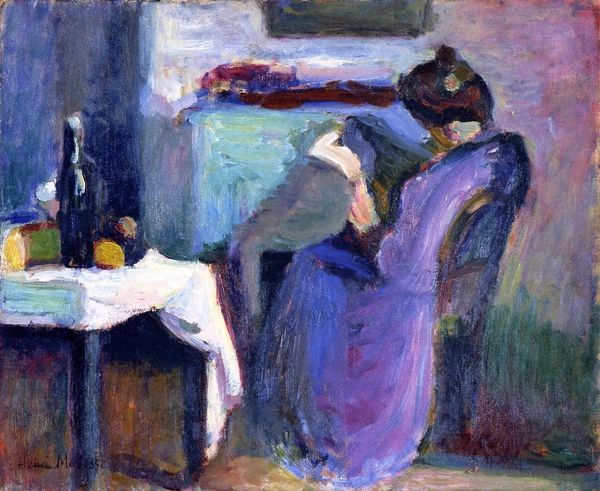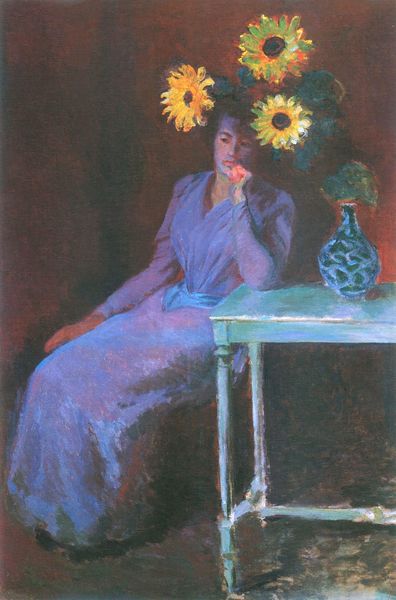
painting, oil-paint
#
portrait
#
painting
#
oil-paint
#
german-expressionism
#
figuration
#
oil painting
#
neo expressionist
#
expressionism
#
expressionist
Copyright: Public domain
Curator: Richard Gerstl’s “Portrait of Henryka Cohn,” painted in 1908, currently resides here at the Leopold Museum. Editor: What immediately strikes me is the intense contrast—that stark white dress against the almost violent red and orange of the sofa. It creates an immediate sense of unease. Curator: Interesting. The subject's dress, made using broad strokes of oil paint, contrasts dramatically with the highly textured surface of the sofa, a clash typical of early Expressionist explorations of the human form within artificial interior space. Look closely and you'll find that this painting also deviates from academic norms as Gerstl applied paint very gesturally; at times even scraping it. This creates the image's unsettling mood. Editor: Yes, the surface is so active! This "roughness" seems crucial, suggesting more than simple portraiture, moving, rather, towards representing interior psychological states, beyond only appearances. The brushwork, almost aggressively expressive, builds volume and presence. Note too how the color fields create almost a semiotic pattern for interpreting affect within social classes, almost as if signaling revolt. Curator: Exactly! Cohn, being part of a wealthy family, could access these avant-garde styles. The social context of such experimentation cannot be ignored; artists like Gerstl pushed boundaries that relied on existing economic structures. Henryka was also Arnold Schoenberg's wife's sister! This work then becomes not merely an image, but a cultural artifact intertwined with music and society's intellectual elite. Editor: Yes, by focusing solely on structure, line and palette, one might fail to acknowledge how integral production means were as both cause and effect with his Neo-Expressionist style! In short, its formal properties gain added depth through considering production and networks of material support within social milieu. Curator: Absolutely! By combining insights from materiality and the language of form, one discovers the multifaceted depth imbued within "Portrait of Henryka Cohn," where both paint and context powerfully engage with both eyes and mind. Editor: Indeed. It leaves you considering art history more completely; beyond its appearance—to also examine materials' very substance and life cycles.
Comments
No comments
Be the first to comment and join the conversation on the ultimate creative platform.
